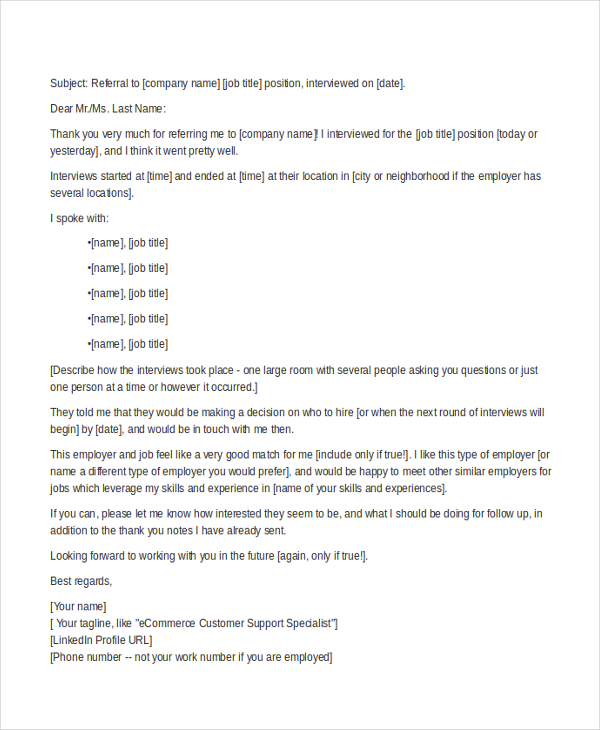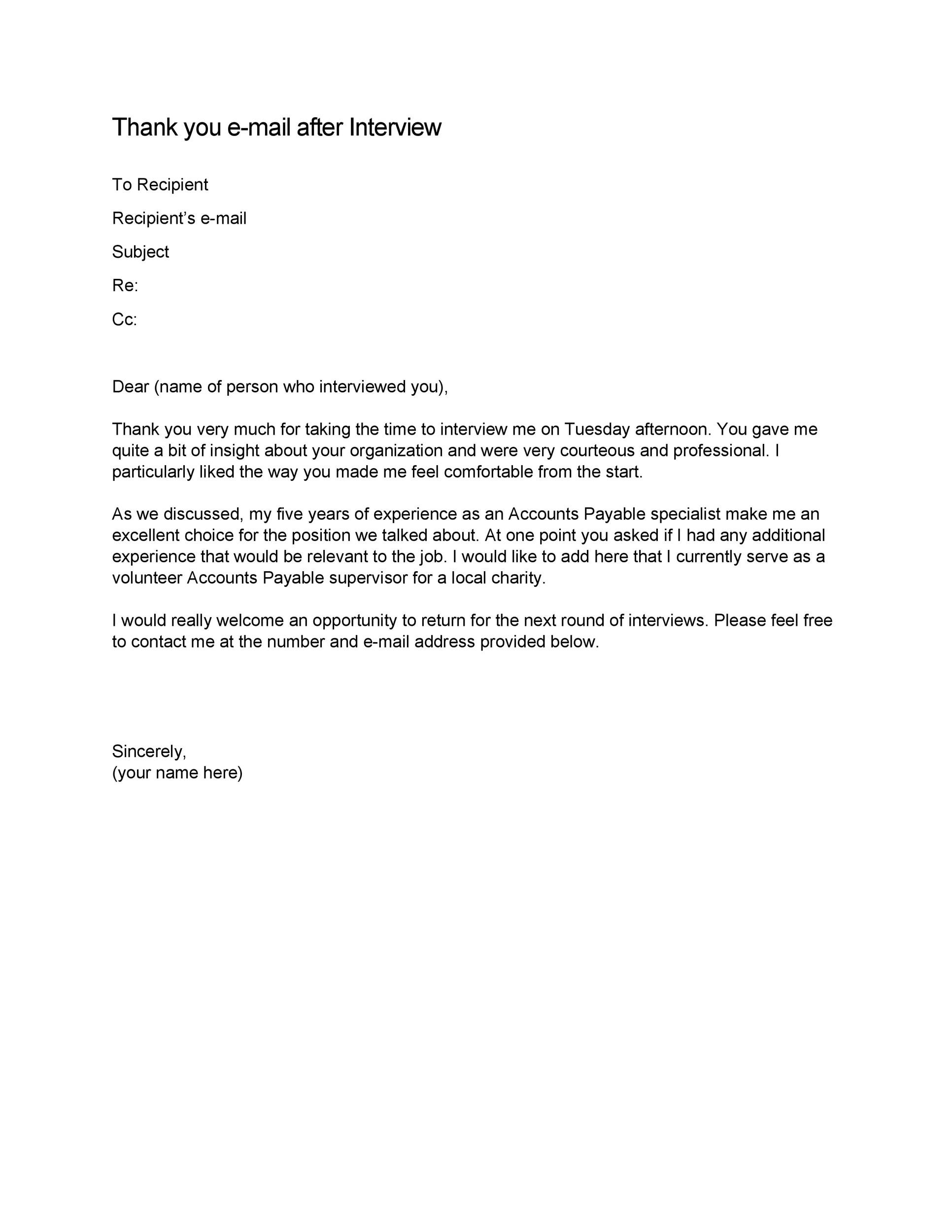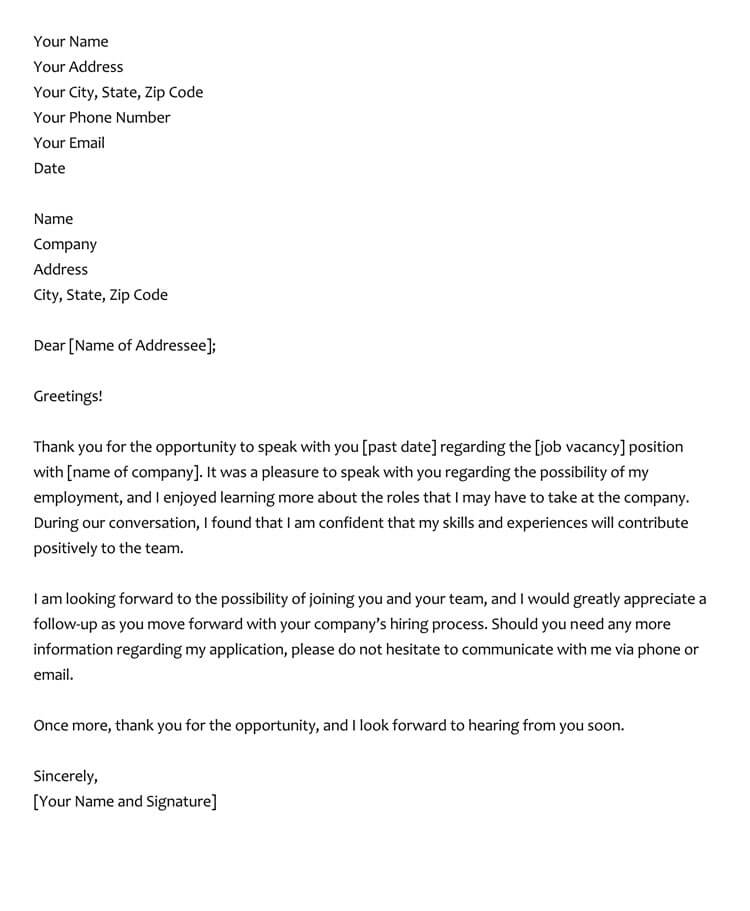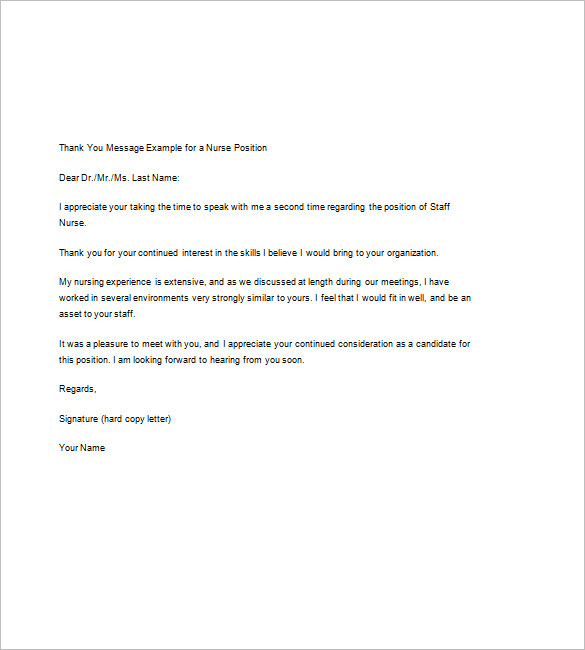


Great! You think you're qualified, but what proof can you offer? Don't write a note saying you're qualified unless you can back it up with some specifics. "I believe my qualifications are perfect for this job." If your messages don't go beyond the following trite and inappropriate phrases and sentiments, you'll want to up your game to help your cause.Ĭontinue by offering one or two specifics that relate to your conversation. There's more to following up than getting the interviewer's name spelled correctly and shooting off a "thanks for meeting me" note. Read your note and ask yourself: "Could someone who didn't even participate in the interview have written this?" If the answer is yes, it's back to the drawing board, or you'll risk leaving the interviewer unimpressed. Other red flags for the employer: Were you in too much of a hurry when you wrote your message? Are there mistakes or typos? Does your follow up cause the reader to doubt your interest in the job? If you can't sound invested in the position and take the time necessary to write an interesting note, you may be wasting your time. For example, if your letter is too generic, too short, or if it sounds like a template or scripted message, you probably won't win any points. If you want hiring managers to remember you favorably, write a knockout thank-you note it may make a difference.īe mindful, though: some follow-up notes leave employers cold and less likely to pursue candidates.
#Thank you letter after interview series#
Consider that a lot of employers interview numerous candidates, many of whom gave similar answers to a series of basic questions. While unlikely to make an employer totally reverse an opinion about you, when done well, thank-you notes can help you stand out from a crowd of applicants. Continue reading.You know it's a good idea to write a thank-you note after an interview, but a lot of people fail to take this basic step. To see some examples of second interview thank you letters, keep scrolling for email templates you can use. There’s no need to follow up again unless it’s been a couple of weeks and you still haven’t heard anything. Do keep your thank you email to a couple of paragraphs.Don’t send your entire portfolio or series of links (unless you were asked to).Do send a link to a relevant project or materials.Don’t send the exact same email to multiple people.In general, follow these do’s and don’ts:

Follow up on a question you were asked, send through a relevant link, address any lingering concerns, and reiterate how excited you are about the company - and why. Instead, think about what you talked about in the interview. Don’t send off a generic email just for the sake of ticking a box - smart recruiters will see right through it and see it as a lazy attempt to curry favor. What to say in a thank you letterĪbove all, your thank you note should reflect the conversations you had in your interview.

A handwritten letter may look nice, but it’s not necessary (except in very niche cases) and may risk getting lost or arriving late. Sending your thank you note via email is fine for the majority of employers. And never have a pre-written thank you note ready to hand out at the end of your interview - it’s gimmicky and unlikely to impress. Which doesn’t mean sooner is always better - wait at least a few hours to show that you’ve properly considered the interview. Any longer, and it might start to look like it slipped your mind. Within 24-48 hours of your interview is ideal. Send your follow up quickly - but not immediately. This is even more true after a second interview - while an initial interview follow-up may seem perfunctory, after the second interview you’ll have established a much stronger relationship with a company and will have more to say. While it might seem old-fashioned, the tradition of the thank you note is still very much alive, and the majority of interviewers still expect one. But don’t relax just yet! There’s one small (but important) step left - the thank you note. What’s better than landing an interview? Landing a second interview! You nailed the behavioral questions, established a rapport, and are walking out with your head held high.


 0 kommentar(er)
0 kommentar(er)
